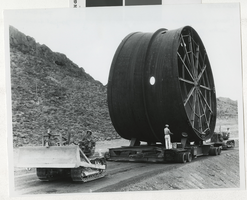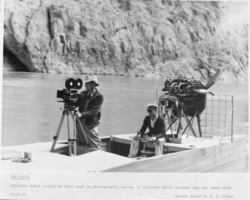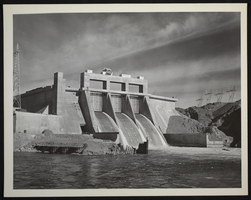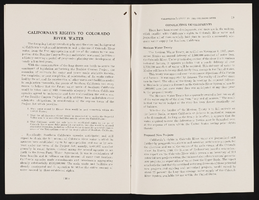Search the Special Collections and Archives Portal
Search Results
Reverend Prentiss Walker oral history interview
Identifier
Abstract
Oral history interview with Reverend Prentiss Walker conducted by Bernard Timberg on January 27, 1974 for the Ralph Roske Oral History Project on Early Las Vegas. Walker discusses Las Vegas, Nevada from 1933 to the early 1970s, including the equality of opportunity and social acceptance that black citizens enjoyed in Las Vegas in the thirties. He also recalls how black people did not look upon southern Nevada as a place of permanent residence, but rather as a temporary place to earn money quickly.
Archival Collection
Bernice Reid oral history interview
Identifier
Abstract
Oral history interview with Bernice Reid conducted by Brenda Sawyer on March 12, 1975 for the Ralph Roske Oral History Project on Early Las Vegas. Reid describes life in Nevada after moving there in 1926 and the challenges she and her ex-husband faced trying to breed chinchillas on their ranch on Mount Charleston. Reid also discusses the development of Las Vegas, Nevada, seeing President Hoover speak at the Hoover (Boulder) Dam, and the nuclear weapons tests.
Archival Collection
Lucille Down oral history interview
Identifier
Abstract
Oral history interview with Lucille Down conducted by James Down on February 21, 1972 for the Ralph Roske Oral History Project on Early Las Vegas. Down discusses the lives of Union Pacific Railroad workers, and her first job, which was at the Southern Nevada Telephone Company. She also discusses recollections on the social, recreational, religious, and economic changes that contributed to the development of Las Vegas, Nevada.
Archival Collection
Jensen, Frank C., 1904-1978
Frank Christian Jensen was born on May 18, 1904. Jensen served as a first aid attendant for the Bureau of Reclamation on the Hoover Dam (Boulder Dam) Project from 1932 to 1969, interrupted by World War II and the Korean War, where he served as an assistant flight surgeon. Jensen retired from the Bureau of Reclamation on October 22, 1969 and passed away in 1978.
Source:
United States Congress. Congressional Record, Extension of Remarks. 91st Cong., 1st sess., Congressional Record 115, pt. 23: 30643-32004. April 22, 1969.
Person
Members of the Nevada State Board of Control sailing on the Thunderbird Hotel's new cruiser on Lake Mead with Lt. Governor Cliff Jones at the helm; Dan Franks, State Treasurer; Cliff Jones; Ralph Thomas, Secretary to Governor; Charles H. Russell; Peter Merialso, State Controller; and John Koontz, Secretary of State, 1951 July 18
Level of Description
Archival Collection
Collection Name: Bureau of Reclamation Photographs of the Hoover Dam and Boulder City, Nevada
Box/Folder: Folder 07 (Restrictions apply)
Archival Component

Photograph of a penstock being transported, Hoover Powerplant, 1930s.
Date
Archival Collection
Description
Image

Film transparency of men with photography equipment on the Colorado River, March 16, 1935
Date
Archival Collection
Description
Image

Photograph of the Davis Dam, December 28, 1950
Date
Archival Collection
Description
Image

